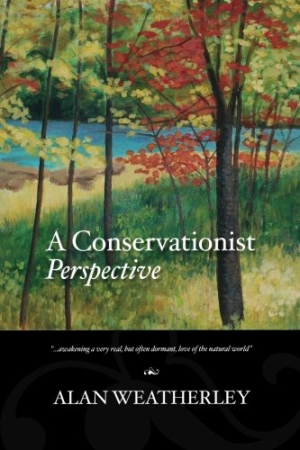A Conservationist Perspective
While growing up in Sydney, Australia, Alan Weatherley developed a curiosity about animals, insects, and marine life. In the fifty years he’s been working as a scientist, his interest in the natural world has never waned. With A Conservationist Perspective, he seeks to pass along that fascination to others.
A professor emeritus at the University of Toronto, Weatherley focuses his text on areas related to ecology and zoology. He also uses art to express his interest in nature, an interest illustrated by his landscape painting on the book’s cover.
Much of the book recounts scientific studies Weatherley has conducted. In lengthy detail, he demonstrates his considerable knowledge, obtained through decades of research. Thanks to his extensive work on conservation issues, he has a unique perspective on how the field has changed over time.
While he has led many environmental studies, Weatherley explains how solutions were not always implemented, or not acted on quickly enough, and he conveys his frustration with the lack of concrete progress made over the years. He points to governmental agencies that fail to follow through on the data presented and touches on the politics that influence conservation efforts. He describes a project on zinc levels in the Molonglo River that he directed while on the faculty of the Australian National University in 1960. After several years of research, the results and suggestions were submitted to the National Capital Development Commission, but the project was abandoned due to lack of funding. It remained untouched until a decade later when newly elected officials resurrected it. He notes the important role volunteers can play in exerting pressure on government agencies.
Readers with a scientific background or a curiosity about the technical aspects of biology, ecology, and zoology will find Weatherley’s detailed text engrossing. A Conservationist Perspective could be a useful companion text for students in those fields. For readers who do not have a scientific background, the level of detail, which is almost instructional, may be too dense. His focus on environmental issues in Australia and Canada may also limit the appeal.
Notably, the latter third of the book addresses the problems of introducing nonnative species into an ecosystem and the impossibility of controlling nature.
While Weatherley’s stated goal of “engaging a great public” may not be completely achieved, for scientists and others working in the environmental fields, his book will be both educational and inspirational.
Reviewed by
Maria Siano
Disclosure: This article is not an endorsement, but a review. The publisher of this book provided free copies of the book and paid a small fee to have their book reviewed by a professional reviewer. Foreword Reviews and Clarion Reviews make no guarantee that the publisher will receive a positive review. Foreword Magazine, Inc. is disclosing this in accordance with the Federal Trade Commission’s 16 CFR, Part 255.

